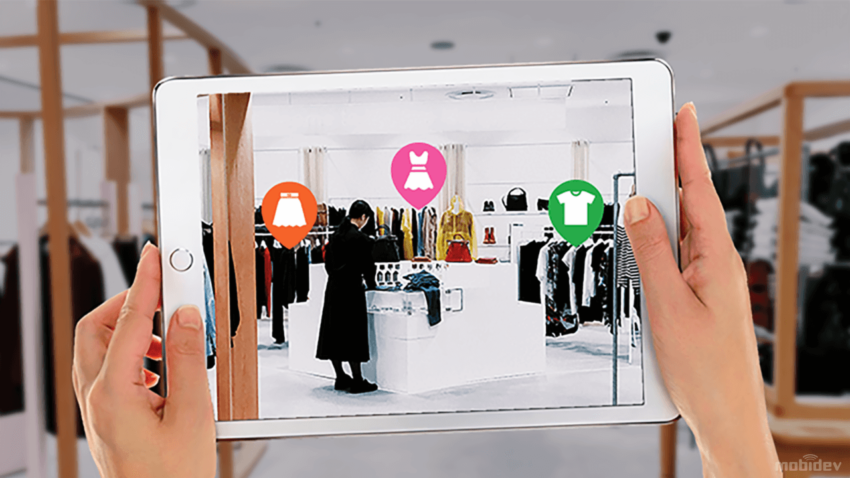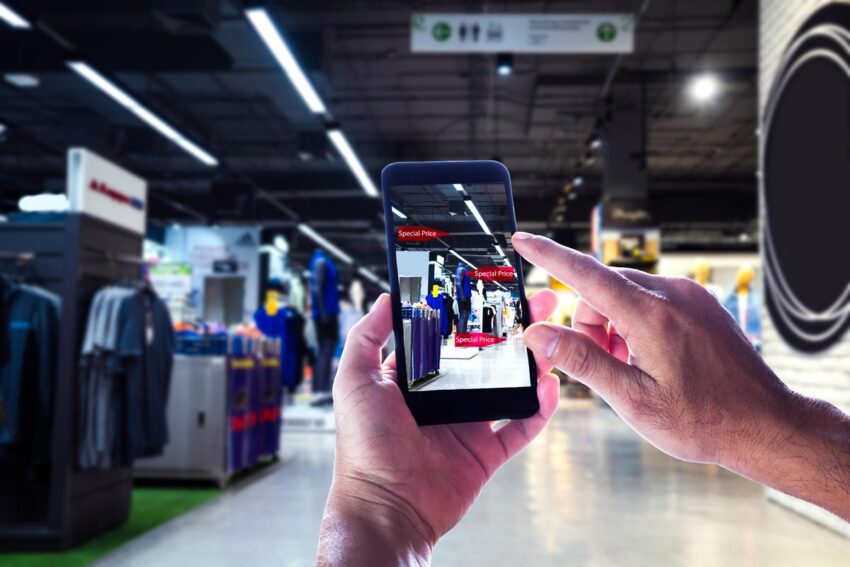
05 Apr How AR is Transforming the Retail Industry
The retail industry has seen a lot of change over the last few years. With consumers becoming more savvy and demanding more than ever, retailers are looking for innovative ways to engage with their customers. Augmented reality (AR) is one such innovation that’s being used by brands in retail to help them provide an improved customer experience. The content is brought to you by https://technochatnews.com/
How will augmented reality (AR) change the retail industry?

Image source: Google.com
The retail industry is a multi-trillion-dollar market that continues to grow at an exponential rate. According to the International Council of Shopping Centers (ICSC), global retail sales have increased from $3 trillion in 2003 to $4 trillion in 2010 and are expected to reach over $6 trillion by 2020. This growth is fueled by changing consumer preferences and shifting demographics, as well as technological advancements that allow retailers access to new markets around the world without having physical stores or warehouses located there. Discover: Effective Insect Control with Mo Stick Insect Killer
However, while these changes have been great for many industries–especially those related directly to consumer goods such as clothing or food–they’ve created several challenges for traditional brick-and-mortar retailers who now face stiff competition from online stores like Amazon Prime Wardrobe where customers can try on clothes before they buy them; meal delivery services like Blue Apron which deliver fresh ingredients along with recipe cards so people don’t need storage space for these items; grocery store chains such as Kroger with self-checkouts where machines scan barcodes instead of cashiers reading them off manually; etcetera ad nauseam ad infinitum.
How is AR changing the way we shop?
AR is a new way to interact with the products we buy. It allows you to see how items look in your home or office, helps visualize furniture arrangements, and even allows you to try on clothes before purchasing them.
AR can be used in many different ways by retailers and consumers alike. In this article, we’ll explore some of the most popular uses of AR technology today:
- Visualizing furniture — This one is obvious! You can now see what any piece of furniture looks like in your living room before buying it from Amazon or another retailer that offers AR features on their website (IKEA does). This feature allows customers who might not have been able to physically visit an IKEA store before purchasing their items online because they didn’t have time or money for travel expenses etc., to access those same benefits without leaving home!
- Trying out clothing combinations — Another great benefit? Using augmented reality technology allows customers more freedom when trying out different outfits because they won’t have to worry about whether something matches since everything will look exactly how it should based on what they’ve chosen beforehand through this tool!!
How is AR helping brands engage with customers?
AR is a tool that can be used to help customers understand your products. AR can be used to help customers understand the features of your products, how to use them, and even how they work. For example:
- A shopper may use augmented reality to learn more about an item before purchasing it in-store or online. For example, she might point her phone’s camera at a pair of shoes on display in an Apple Store window and see a 3D model pop up on the screen showing how they look from different angles–or even try them on right there! This could lead her down another rabbit hole where she gets lost in all sorts of information about style trends, materials used in making those clothes (and other related topics).
- Another example would be if someone wanted some advice on choosing home decor items such as throw pillows or wall art; this person could ask Alexa (Amazon’s virtual assistant) questions like “What colors go well together?” or “What kind of furniture goes best with brown carpeting?”
What opportunities does AR create for retailers?
AR provides retailers with several opportunities to improve the shopping experience, including:
- Enhancing the in-store experience by providing more personalized service, such as product recommendations based on previous purchases or feedback from other customers.
- Engaging customers in new ways with AR apps that allow them to play games or watch videos while they browse for products. For example, you could use an app like IKEA Place (which lets users combine furniture from different rooms) while shopping at IKEA stores and see how different pieces would look together before buying anything!
- Helping retailers manage inventory more efficiently by enabling them to keep track of what’s selling well and what isn’t selling at all so they can reallocate their resources accordingly.
3D Mapping and AR in Retail
AR can be used to create a virtual environment. This can include showing how a product looks in its natural environment or giving customers an idea of what the product looks like before they buy it.
AR is also great for showing how products work and interact with their surroundings, which is especially helpful when it comes to electronics and appliances. For example, if you’re shopping for a new TV but aren’t sure if your current entertainment center has enough room for one, an AR app could help visualize how much space there will actually be left over after installing the new set-top box on top of your existing cabinet shelves or stand (or lack thereof).
Digital Marketing, AR, and VR in Retail
AR is an important part of a retailer’s digital marketing strategy. It allows retailers to engage with customers, attract new ones and sell products or services.
AR has been around for some time now, but it’s only recently that companies have begun using it as an integral part of their strategies. The use cases are endless: from helping shoppers find what they want in stores to allowing them to make purchases from home (or wherever else), AR promises to revolutionize the way we shop for goods and services forever.
Conclusion
AR has the potential to transform the retail industry and create new opportunities for brands and retailers. With AR, customers can try on clothes or shoes in their homes before buying them, allowing them to make better buying decisions based on how things look and feel in person rather than relying solely on images online. This could help overcome some of my struggles with shopping for clothing – when I shop online it’s often difficult for me to imagine myself wearing an item because of its size or fit!

Sorry, the comment form is closed at this time.